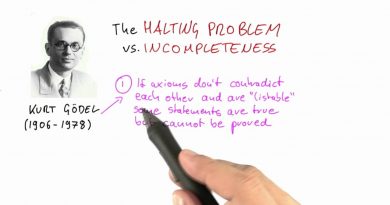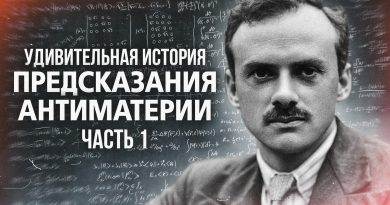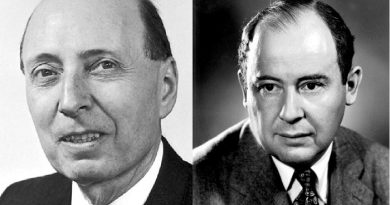History of physics as history of our evolving understanding of light
Luboš Motl, September 25, 2015
It’s interesting to remind yourself that almost all of the important physical concepts and revolutions may be explained so that light plays a rather central role. Some ideas are «cousins» of lights or «generalizations» of light. At the end, I obviously think that gravity is more fundamental than light but you can get very far with light.
For the religious people, light is tied to God, heaven, angels, knowledge – while the darkness is the Devil, hell, ignorance etc. Light is at the end of the tunnel in afterlife. Blah blah blah.
Light is one of the important enough words that you should trace in different languages. «Světlo» in Czech or Slavic languages makes light related to the world. Latin has «Lux» («Fiat lux» is «let there be light») and «Lumen». Esperanto’s «lumo» is derived from the Latin «lumen». In the Czech culture, «lux» is a synonym of the vacuum cleaner. Why is the word for the vacuum cleaner the same as the Latin word for light? Because Lux International, a dominant producer of vacuum cleaners in the 1920s or so, started by production of kerosene lamps. 😉
In Greek, «fos» is light and the genitive is «fotos», obviously the root of photography and many other things. After similar comments, I jumped to physics.
I won’t repeat these trivialities here because most TRF readers know this stuff. Just keywords. Light rays. Beams. Eye. Lens in the eye and telescope. Colors. Rainbow: reflections and refraction in water droplets. RGB sensitive cells on the retina. Three parameters for color perception, RGB. Daltonism. Light is a wave. Newton vs Huygens. Newton rings paradoxically show interference which Newton didn’t believe. Which wave? Electromagnetic wave. Electromagnetic spectrum, from radio waves to gamma radiation, by the wavelength. Luminiferous aether. Radio hosts still haven’t learned that the aether doesn’t exist. Measurement of the speed of light. Lene Hau’s stopped light. Numerical value of the speed of light and redefinitions.
Michelson-Morley experiments. Special relativity and the constancy of the speed of light. A video on the Lorentz transformations. Two videos on relativistic optical effects. General relativity and the forbidden infinite speed of Newton’s gravity. Curved spacetime. Predictions of GR. Gravitational lensing. Black holes: escape speed, evidence from darkness, fall to a black hole, video.
Light as thermal radiation. Ultraviolet catastrophe. Planck’s fix involving light quanta. Light is a stream of particles as well, after all. Einstein’s application for photoelectric effect. Compton scattering. Hawking radiation (Bekenstein’s insights…) as the Planck curve, not yet observed. CMB radiation as the Planck curve, observed and perfectly matching predictions. Quantum mechanics and the novel compromise between light as waves or particles. Everything is in between waves and particles, probabilistic predictions, quantized energy. Einstein’s derivation of spontaneous and stimulated emission from time reversal of absorption. Lasers, photons as collectivists, application in holography.
Quantum field theory. Quantized waves, Feynman diagrams for electron repulsion. The Standard Model, list of elementary particles. Bosons and fermions. String theory. Stringy compositeness of elementary particles. Quantized vibrations. Splitting and joining strings instead of point-like Feynman diagrams. Light as a stream of photons, vibrating strings. Extra dimensions and light as twisted garden hoses of the extra dimensions. String theory as unification of all good ideas about light. Recommendations of schools to pick for the schoolkids. Summary: light became different every time people discovered an important new thing in physics.
Most of the lectures talk about things that are «localized in time» – about some theory that was discovered and developed in some era. But this lecture about light was an object-oriented one – about an object and how all types of theories from all epochs are looking at it. I think that such object-oriented lectures are different and interesting. The knowledge is being reorganized in different ways and it makes the people develop new links between parts of their knowledge.
I do believe that there should exist lots of object-oriented lectures. Light is perhaps too big and comprehensive topic. But there may be less widespread objects suitable for object-oriented lectures. Like the Sun, to mention a random thing. Just realize how big a portion of the scientific advances was linked to the Sun. Heliocentrism vs geocentrism, thermodynamics, absorption and emission, nuclear physics, general relativity and solar eclipses, light bending.
Well, the Sun was still too similar to light. But there are lots of very different focuses of object-oriented lectures. Imagine an interdisciplinary lecture on biology, evolution, as well as geology etc. focusing on the concept of the grandfather, for example. Or one on water. More generally, I do feel that the organization of knowledge into subjects and courses etc. is way too uncreative and there should be a greater diversity in these issues. But people – teachers etc. – are probably too lazy for that.


